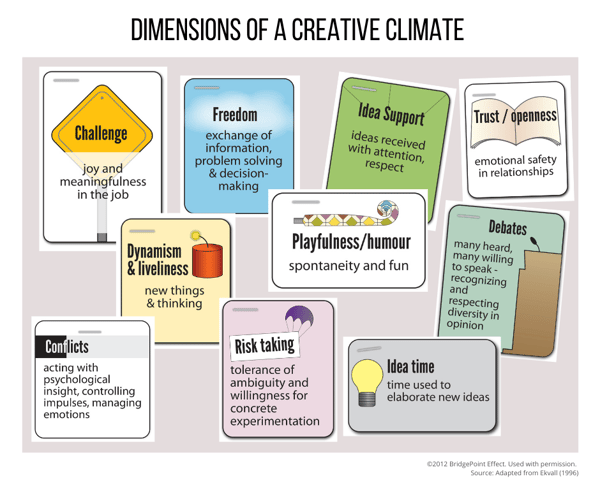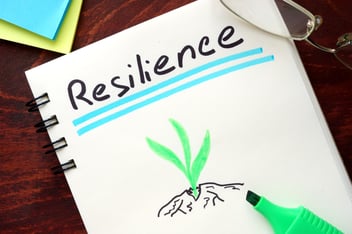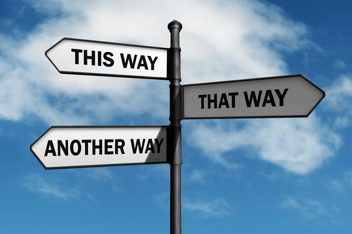
Written by Janice Francisco
If you're wondering what kind of organizational culture supports innovation this blog outlines the defining features of a culture of innovation.
An organizational culture that supports innovation is the product of two things: the people in the organization—their leadership style, shared values, behaviours, attitudes, communication styles and working practices—and the infrastructure (e.g. policies, processes and systems).
In short, organizational culture is simply “the way we do things around here.”
I define a culture of innovation as:
An environment that has the agility to respond to change and provides the psychological safety, process and tools to leverage the creative thinking needed to innovate and gain economic and social value through new or improved products, services or processes.
Innovation is a leading indicator of an organization’s ability to sustain success. And in today’s uncertain and complex global business environment, sustaining success through a culture of innovation takes on increasing importance. A “culture of innovation” gives you a competitive advantage.
An organization’s culture is visible to employees and customers. The stories employees and customers tell about your organization will give you a hint about its culture.
How to Create an Organizational Culture that Supports Innovation
It’s important to understand that an organization is a system. At its core are individuals, who comprise teams, who then comprise the organization.
If you impact the individual, you’ll impact the teams, who will then impact the organization. You have to impact the parts before you impact the whole.
The reverse is also true. Vision, strategy and direction set at the organizational level will impact teams and individuals. Culture comes from the top: the CEO and executive team are largely responsible for an organization’s culture. Their leadership style, values, behaviours and way of working set the tone for an organization’s culture.
Thus, if an organization wants a culture of innovation, the leadership team must take the lead by setting their intention, communicating it to the wider organization, and demonstrating their commitment to innovation through their behaviours and involvement in the process of achieving innovation.
How do you set intentions? Develop and implement an innovation strategy to define innovation in your context and answer the questions about who, what, where, when, why, and how you will innovate.
For more on setting intention, read our blog on How to Develop an Innovation Strategy.
After setting the intention, the leadership team and employees can take the following four steps:
- Create a shared understanding of innovation
- Create a work environment that supports creativity and
innovation - Build innovation skills and introduce a process for
innovation - Measure the impact.
These steps are described in the following paragraphs.
4 Steps to a Culture of Innovation
1. Create a shared understanding of innovation
How and why to innovate will look different from one company to the next. Innovation is contextual, which means that while you may understand the importance of innovation, you need to create a shared understanding around what it is, what it looks like, and what it will do for your organization.
Asking your teams “to be innovative” won’t get you there.
Forming a shared and specific vision of what innovation means as you go about your daily work will.
Innovation doesn’t have to be limited to revolutionary new technologies, products and services, like the computer, the cellphone or space travel. There is much to be gained from changes that provide value to your customers and employees. This is called incremental innovation.
Whether revolutionary or incremental, at its essence, innovation is about:
Responding to existing or anticipated change to keep your organization vital, viable, productive and relevant so you can benefit the people you serve and contribute to economic growth and prosperity in the places you operate.
The intention of innovation is to make our lives better and easier. The outcome of innovation is measurable value for the organization and the economy. The reward is the sustainability of the organization.
This is where having an innovation strategy comes in handy. The trick is to translate a general definition of what innovation is to what it specifically looks like and is intended to do in your organization. It’s got to be in plain language and it’s got to be relevant to everyone in the organization.
2. Create a work environment that supports creativity and innovation
An organizational culture that supports innovation supports creativity—one where creativity is welcomed, can be expressed and is accepted with respect.
In the 1980s, Swedish researcher Goran Ekvall set out to discover what organizational conditions hampered or stimulated creativity and
innovation. He found ten dimensions that impact the environment, represented in the diagram below.

I put “work environment” ahead of “build innovation skills” in this list of four actions to take; small tweaks to the work environment help create the conditions for innovation skills such as creativity to flourish. There’s no point in building innovation skills if the workplace is not conducive to people using them!
3: Build innovation skills and introduce a process for innovation
To better support innovation, individuals and teams must be equipped with innovation skills. The challenge is, much of our educational training focuses on developing critical thinking skills and searching for the one right answer. To be innovative, we need to think and act differently and leverage creative thinking.
The Conference Board of Canada has researched the skills, attitudes and behaviours individuals need to contribute to innovation in the workplace. They are grouped into four skill sets:
- Creativity, problem-solving and continuous improvement skills
- Risk assessment and risk-taking skills
- Relationship-building and communication skills
- Implementation skills
Learn more about these four skill sets and how to assess and develop your innovation skills in our previous blog post, How to Develop Innovation Skills.
The best way we’ve found to build innovation skills in organizations is by teaching the creative problem-solving process (CPS) and engaging people in using the process to tackle innovation challenges.
With FourSight, an assessment helps you understand what kind of creative thinker you are, and collaborative tools help you navigate the CPS process with your team. You can use FourSight to support organizational change and transformation efforts. It builds agility and change resilience by providing a means to organize your thinking and keep moving forward when faced with complexity, uncertainty, and constraints.
Third-party research (2013, 2015) shows an impact 6 – 18 months after
training on creativity and innovation skills development. Research conducted by IBM (2007) shows that teams who have FourSight thinking preference awareness and process awareness outperform teams who don’t.
Our clients experience similar results. Here’s what they tell us they
like about FourSight:
- It is easily accepted, adopted and implemented
as a process for innovation – it makes innovation structural and language-based. - The assessment helps people understand how they
are creative and how they can bring their best thinking to work. - It plays well with others – you can use it with
any business practice, with any other innovation protocols you may have already implemented, and to enhance organizational change and transformation effort.
4: Measure the impact
After implementing the previous three actions to become an
organizational culture that supports innovation, we suggest measuring the impact.
In any organizational effort, what gets measured gets done. Measures are important. They remind us we’re working towards doing something of value, and they help us understand the progress we’re making in building a culture of innovation and achieving innovation outcomes.
Like innovation, how you measure it is contextual. I’ve written about the challenges of measuring innovation and new research on more sensible measures.
If you’re investing in building innovation skills in your workforce and you’d like to measure how you’re doing on building an innovation culture, consider using the Organizational Growth Indicator (OGI).
The OGI can help you quantitatively track and fine-tune your organization’s progress to higher levels of innovation capability when you administer it at the start of an initiative and remeasure annually. Many of our clients have found the OGI helpful as a means to:
- Pinpoint the hidden factors that support and
constrain their organization’s ability to innovate - Improve the skills of their talent and the
performance of the organization by providing feedback on where learning and
development efforts are best focused, and - Evaluate the impact of their training and
development efforts to support innovation.
Summary
The kind of organizational culture that supports innovation is a “culture of innovation.” Culture is simply the way we work. By changing the way you work so that you work more creatively and innovatively, you can become an organizational culture that supports innovation.
An organization is the sum of its parts. Impact the individual and teams to impact your work in the organization. Culture, however, is set at the top. Thus, it’s important for the leadership team to set their intentions for innovation culture and to demonstrate their commitment to innovation through their behaviours and involvement in the process of achieving innovation.
Four actions to take to change the way you work and better
support innovation are:
- Create a shared understanding of innovation
- Create a work environment that supports creativity and
innovation - Build innovation skills and introduce a process for
innovation - Measure the impact.
Are you building a culture of innovation?
Whether for your team or across your organization, our ThinkUP Framework is an ingenious way to develop your team while they work and positively impact results by the next quarter.
The ThinkUP Framework Program teaches your team(s) the innovative thinking skills, tools and process needed to collaborate effectively, work across functions, respond creatively to change and add continuous value to your organization.
Using an action learning model that tackles real work challenges, this program brings immediate, sustainable and long-term impact to your organizational culture.
Need help building a culture of innovation?
Schedule a discovery call
I'll listen to what you're going through and work with you to find a solution.
-Nov-07-2022-09-25-54-1140-PM.png)

